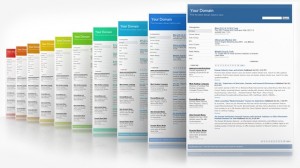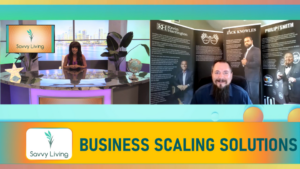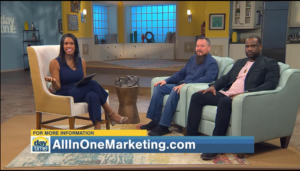 The definition of a landing page is simply “the first page that visitors hit on your site,” so it is not strictly a certain page but any page that a user “lands” on. All websites have landing pages, whether they like it or not, even if it was not specifically designed as such.
The definition of a landing page is simply “the first page that visitors hit on your site,” so it is not strictly a certain page but any page that a user “lands” on. All websites have landing pages, whether they like it or not, even if it was not specifically designed as such.
Landing pages can have a substantial impact on your ecommerce site. A poorly-developed one can hasten its breakdown just as an effective landing page can drive traffic to your site, respond to calls to action and make your business website a success.
One vital measure of the effectiveness of your website is the “bounce rate,” or the percentage of visitors who immediately leave your site without making any other click. The bounce rate is inversely proportional to the effectiveness of the landing page. Basically, this means that a high bounce rate indicates that your landing page isn’t compelling enough for the visitor to pursue its interest or take some other action.
Normally, the home page is the primary landing page of most typical websites. But more and more, site owners are designing landing pages outside of the home page and for good reason.
Most users prefer to skip information which is irrelevant to their needs. They want to get directly to their search, hence the need for a landing page that delivers just that. They can avoid the delays caused by having to click through pages and pages of information when they already have something in mind.
Landing pages serve their purpose when the site owner knows the kind of visitor they are targeting. This is determined by knowing what the visitor clicked on to arrive at your site. A visitor who clicks on an ad for your product would not want to go through other pages to get the information about the product. Webinars, other event registrations and special presentations make use of this same principle.
Not all visitors are looking for the same information. One may click on your link after reading an article you submitted to a consumer review site while another may arrive at your site after viewing your infomercial ad.
For each specific visitor, you can design a landing page that will cater to his needs and contain the information he is looking for. For example, infomercial viewers can be directed to www.yoursite.com/infomercial, while visitors who clicked on your banner ads for this month’s special will be directed to www.yoursite.com/specials.
These landing pages should be evaluated for their effectiveness. The bounce rate is a key measurement for determining the effectiveness of landing pages.
Another measure for landing pages is the success of a “next action.” It might be purchasing the product, requesting more information, signing up for a free product tryout, etc.
Determine your conversion rate by dividing the number of action takers into the number of visitors. A typical conversion rate is 3 to 5 percent for lead generation pages and 1 to 2 percent for e-commerce sites. If your site is successful, you should be getting twice those numbers. I have personally seen results in the 10-20% range when you able to reach very targeted traffic. There are many ways to increase conversion ratio.
A concept that is intrinsic in creating effective landing pages is “alignment.” This is the connection between your source (where the visitor came from) and your landing page. The more connected they are, the higher the success of conversion.
A good example is a banner ad for a specific product from a beauty products company. Clicking on the banner ad and being directed to a landing page showing the exact same product yields a higher conversion rate. If the alignment is not present, on the other hand, there will be a significant reduction in conversion rates.
In general, a landing page must stir these positive emotions in a visitor for it to be effective:
Credibility
Your page must be able to capture the visitor’s trust by presenting a credible appearance. Drop anything that can cause a negative effect in the minds of your visitors, such as a lack of contact information, grammatical errors and typos, buzzwords, “marketese” and jargon, fuzzy or blocky graphics and too much use of serif fonts, like Times New Roman.
Recognition
Your page must provide your visitor a “This is what I’m looking for!” moment upon landing.
Persuasiveness
Your page must be able to convince visitors that your product or service can help them achieve their goal. Keep in mind what attracted the visitor to your product in the first place so you will understand what he is looking for.
Action
You must highlight an action for the visitor to take while he is on your landing page.
Techniques to Use with Landing Pages
Here are some major principles to guide you in the process of developing an effective landing page:
Make the Visitor Feel an Instant Affinity With Your Page
The top half of the first screen should be effective in making the visitor feel that he has come to the right place. The use of the right taglines, images and a position statement (usually about 12 to 15 words) can help to establish your declaration and inform your visitor what the site is about.
Use Specific Headlines and Sub-headings
Throughout your page, include relevant headings and sub- headings so that as the visitor skim reads the page they can see what a particular paragraph or section is all about. This helps him decide whether he will read the text or which section he is interested in. The longer the page, the more you should be using sub-headings. The headline should be aligned as closely as possible with the banner ad or whatever the visitor clicked on to arrive on your landing page.
Focus on a Primary Goal
A landing page can achieve only one primary goal. Examples of these goals are a lead capture mechanism, such as a free demo or product trial, or to lure the visitor to go further and view your main site. The best results come about when you focus on your goal. However, a secondary goal is possible in a landing page. For example, if your primary goal is to make the visitor purchase your product, your secondary goal would be to entice them to sign up for newsletters or emails to receive choice offers.
Use Multiple Calls to Action
Using multiple calls to the same action supports the one primary goal principle. This holds true on a long landing page. A page that doesn’t go below the fold may need only one call to action. Overall, one call to action above the fold and another at the bottom of the page are good.









